Secondly, in directing the relationship between indoor and outdoor space. The office walls onto the corridor zones are, in principle, to be made as a system of glass partitions whose degree of transparency can be modified by the use of foils. This means that views inside, outside and through the building can be directed as required, transparency and spatial depth can be experienced, and indeed outdoor space and the landscape are brought into the innermost area of the building. The interior design is intended to allow spatial relationships, not to block them.
Raiffeisen Finance Center
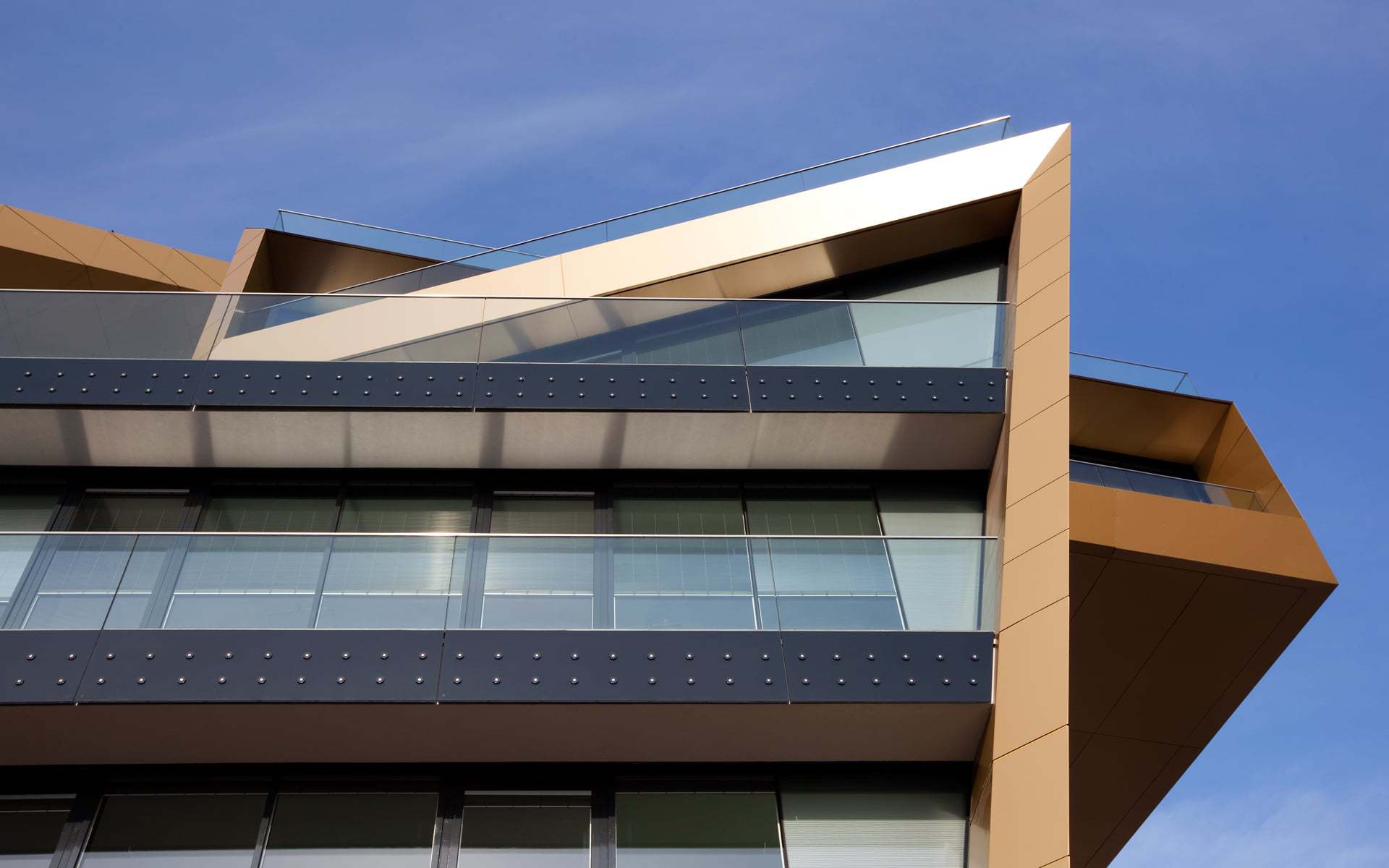
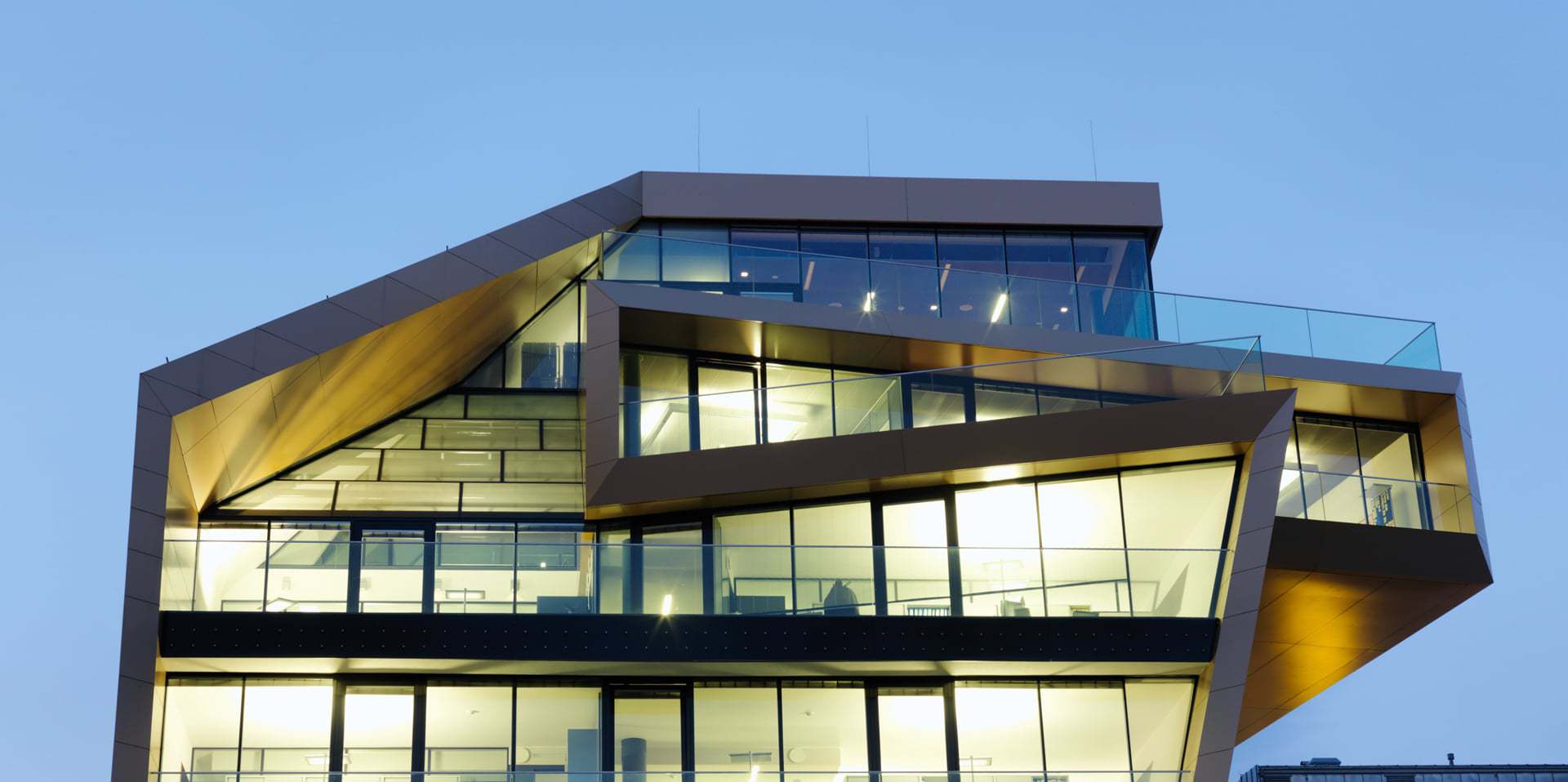
The design of the building playfully responds to the restrictions imposed by the building regulations as well as to the schedule of accommodation for the different floors, and develops an encasing figure that encloses all the activities of the bank in a continuous form.
Year
2006
Venue
Eisenstadt
State
Completed
Category
Work
Size
2561 m²
Year |
Venue |
State |
Category |
Size |
|---|---|---|---|---|
2006 |
Eisenstadt |
Completed |
Work |
2561 m² |
Year
2006
Venue
Eisenstadt
State
Completed
Category
Work
Size
2561 m²
Continuity of intuition
The continuity of the building envelope conveys a sense of identity to both staff and customers, while the building’s volumetric shaping ensures it a striking role in the appearance of the town. It is made of aluminium sandwich panels whose colouring might awaken associations with coins or the bank’s corporate identity. Narrow window openings at calculated positions in the facades respond to the need to screen people who work at computers from glare.
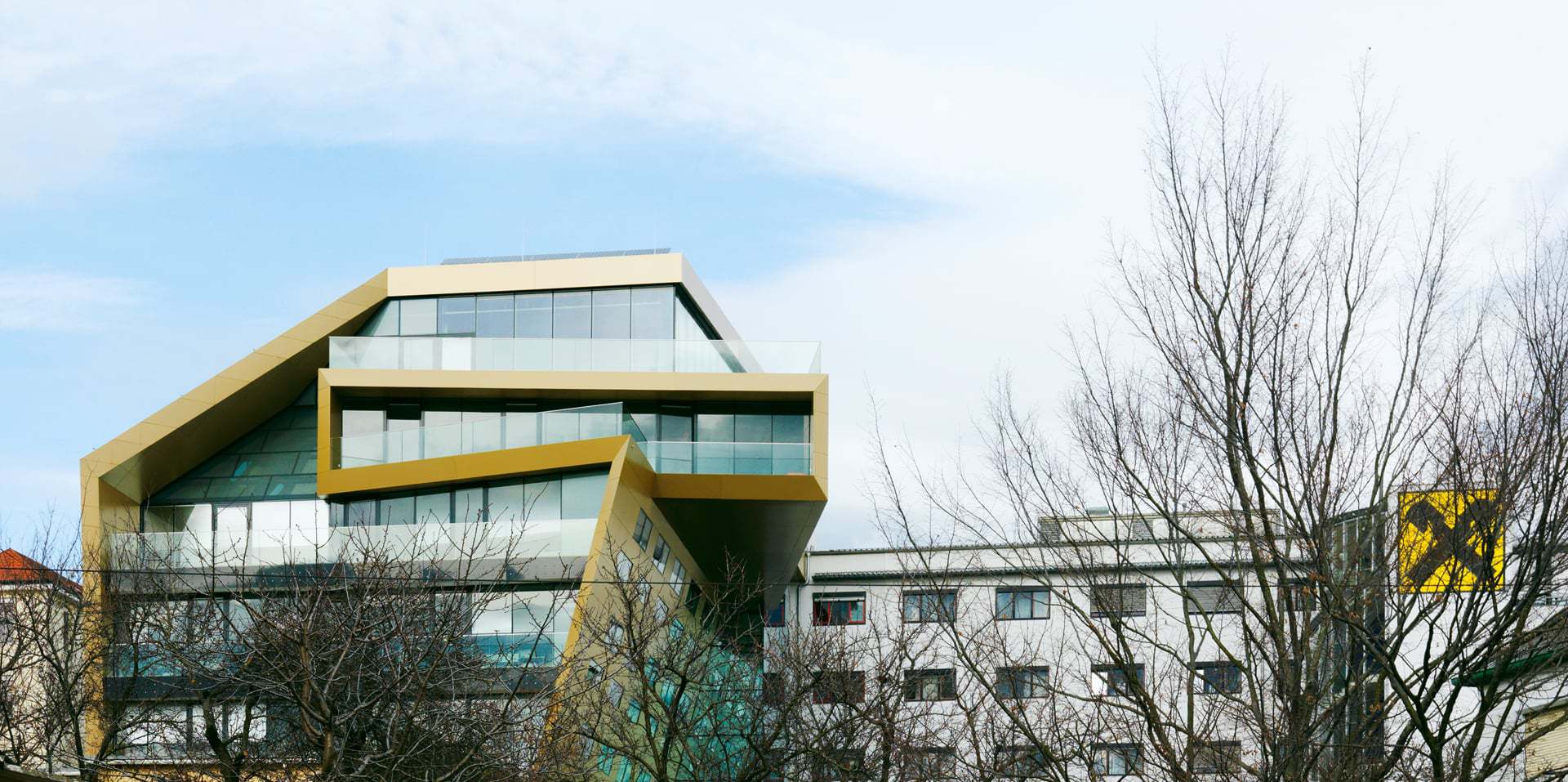
Unusual, but functional
This basic idea – quoted from the explanatory report that accompanied the competition entry – was deepened and developed further. To the east and the west the building is encased in a metallic facade made of Alucobond panels that is perforated by windows arranged in a specially developed layout. This layout allows unfamiliar views outside, but also offers the staff an almost intimate work atmosphere and provides protection against glare for those working at computers.
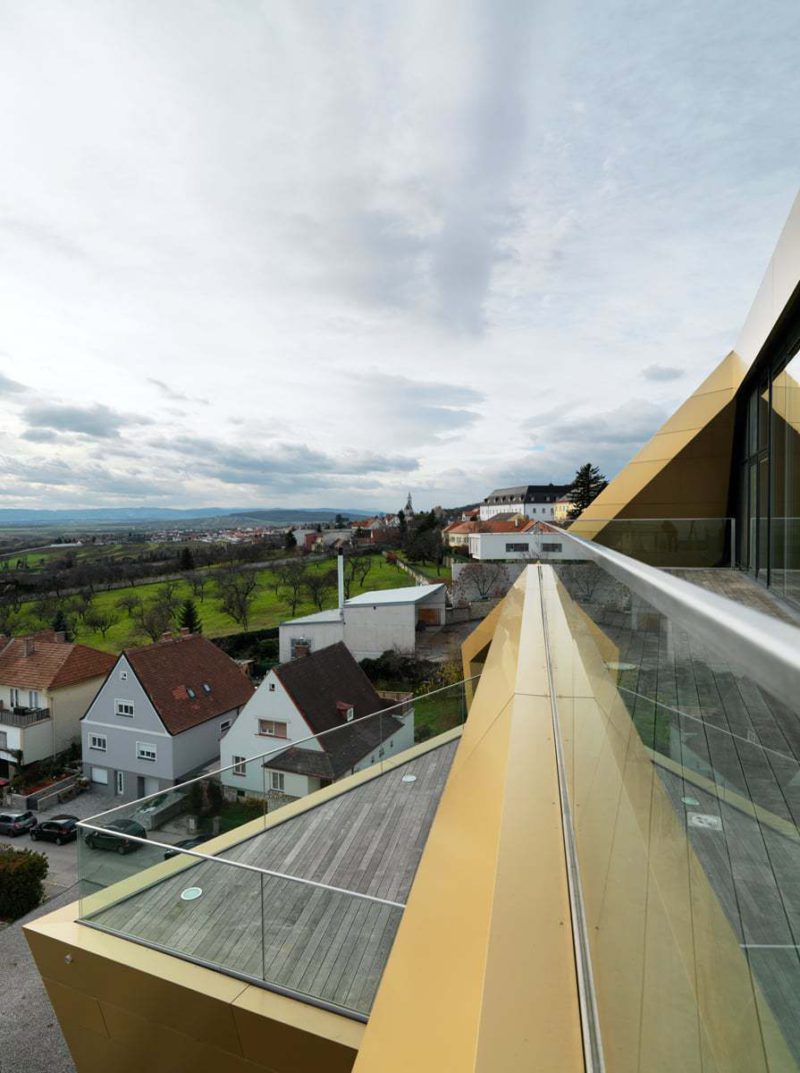
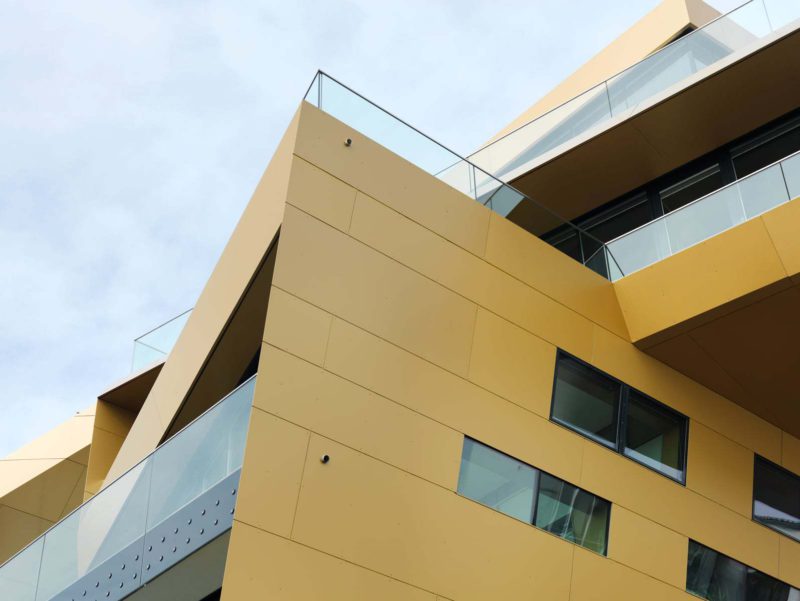
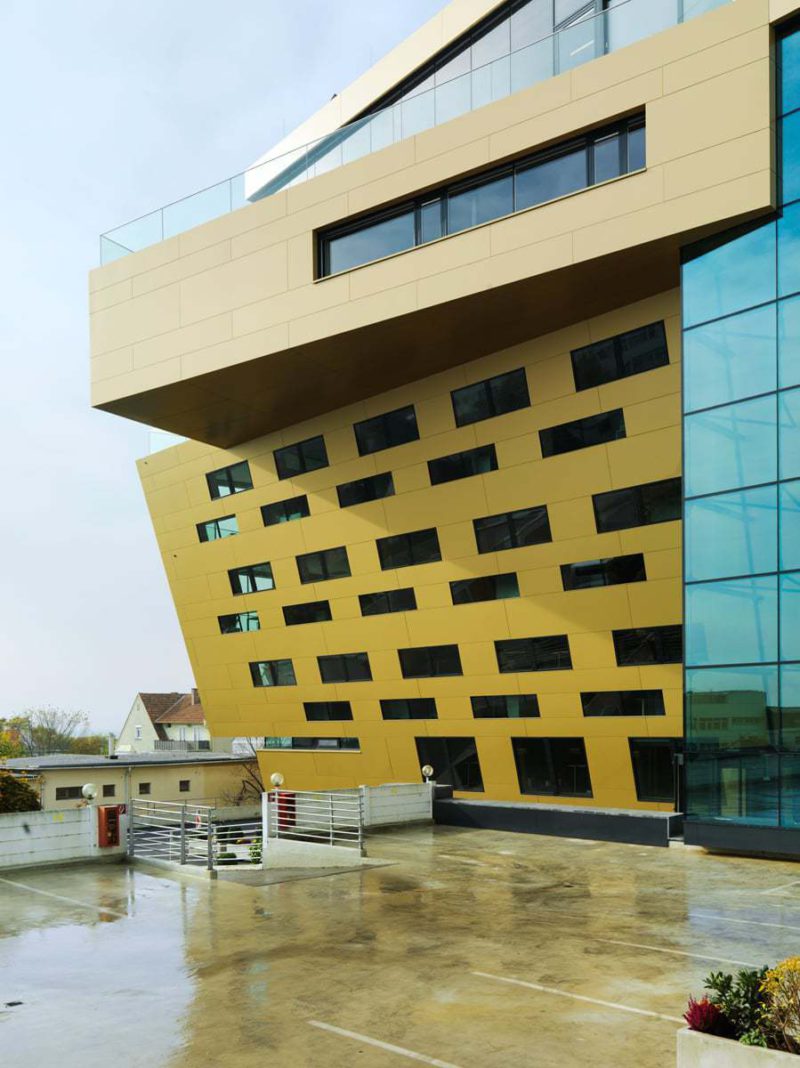
The amount of glazing is based on guidelines on lighting for work places. This allows a large area of solid wall which, thanks to its building physics qualities (good thermal insulation and good heat storage), contributes to optimising the building’s energy balance. The full-height glass facades to the south are a response to the marvellous views across the plain of the River Wulka and, thanks to regulatory elements (sun screen system), can allow energy (solar heat gain) to enter the building or can screen most of it.
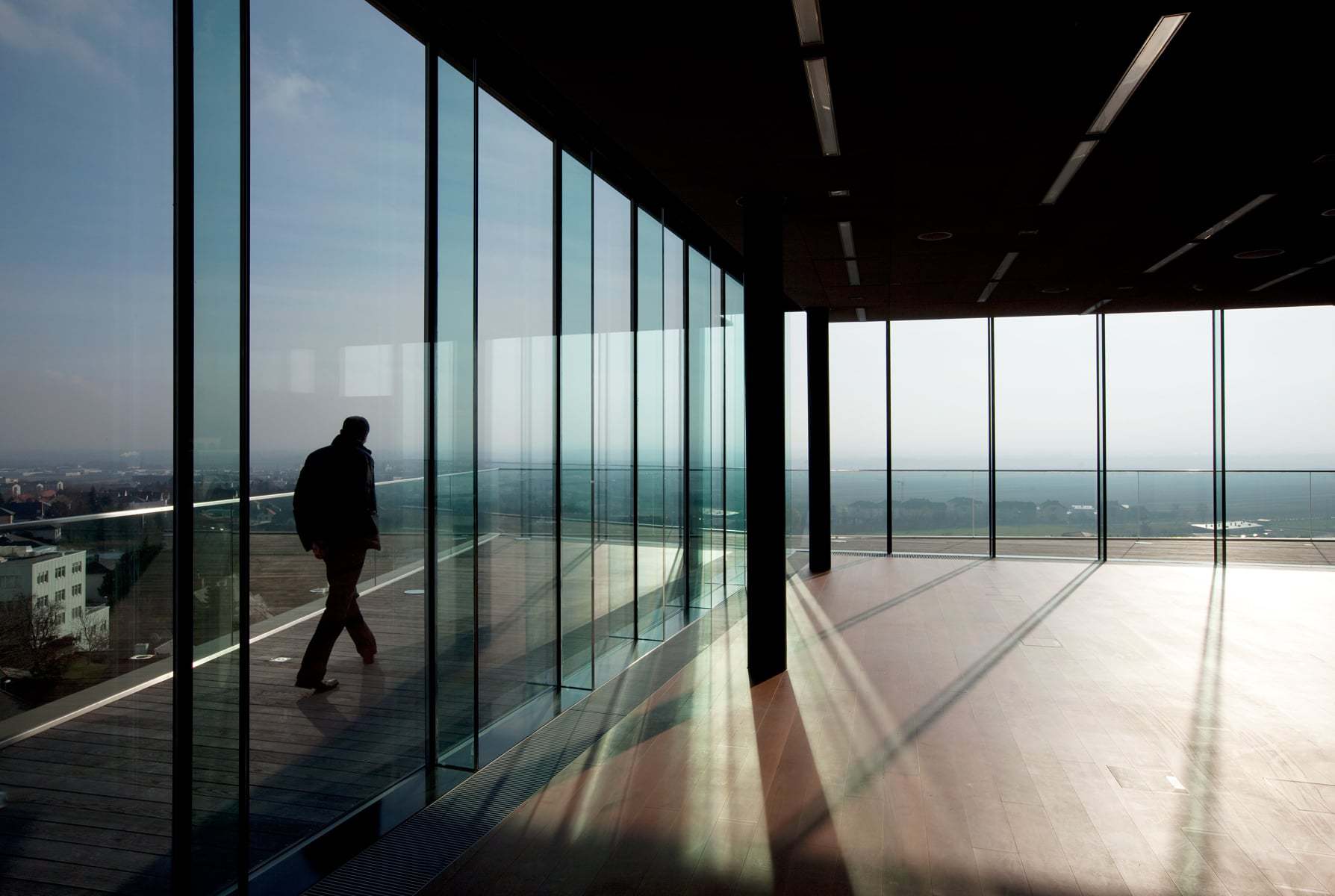
Variable indoor space as a regulated system of reference
The interior is formulated as a regulated system of reference on various levels of meaning:
Firstly, in terms of spaces and materials it forms a single entity with the building’s external form. The material used for the external shell provides the starting point for the concept of materials used in the interior. Like the facade, the window reveals and the fan coils are also clad with Alucobond. The suspended ceilings in the formal areas on the upper floor are made of the metal in the same colour so that, in a sense, the building envelope is drawn into the interior. The exposed, unclad areas of ceiling and external wall are made of smooth exposed concrete. Plasterboard painted light grey is used for the suspended ceilings above the corridor areas as well as for parts of the office partition walls, and together with flooring of sound absorbent rubber or carpet complements the canon of materials in softly graduated shades of grey. The elegant neutralizing background allows individual colour accents to be used in the work area to emphasise special areas, spheres, or significance.
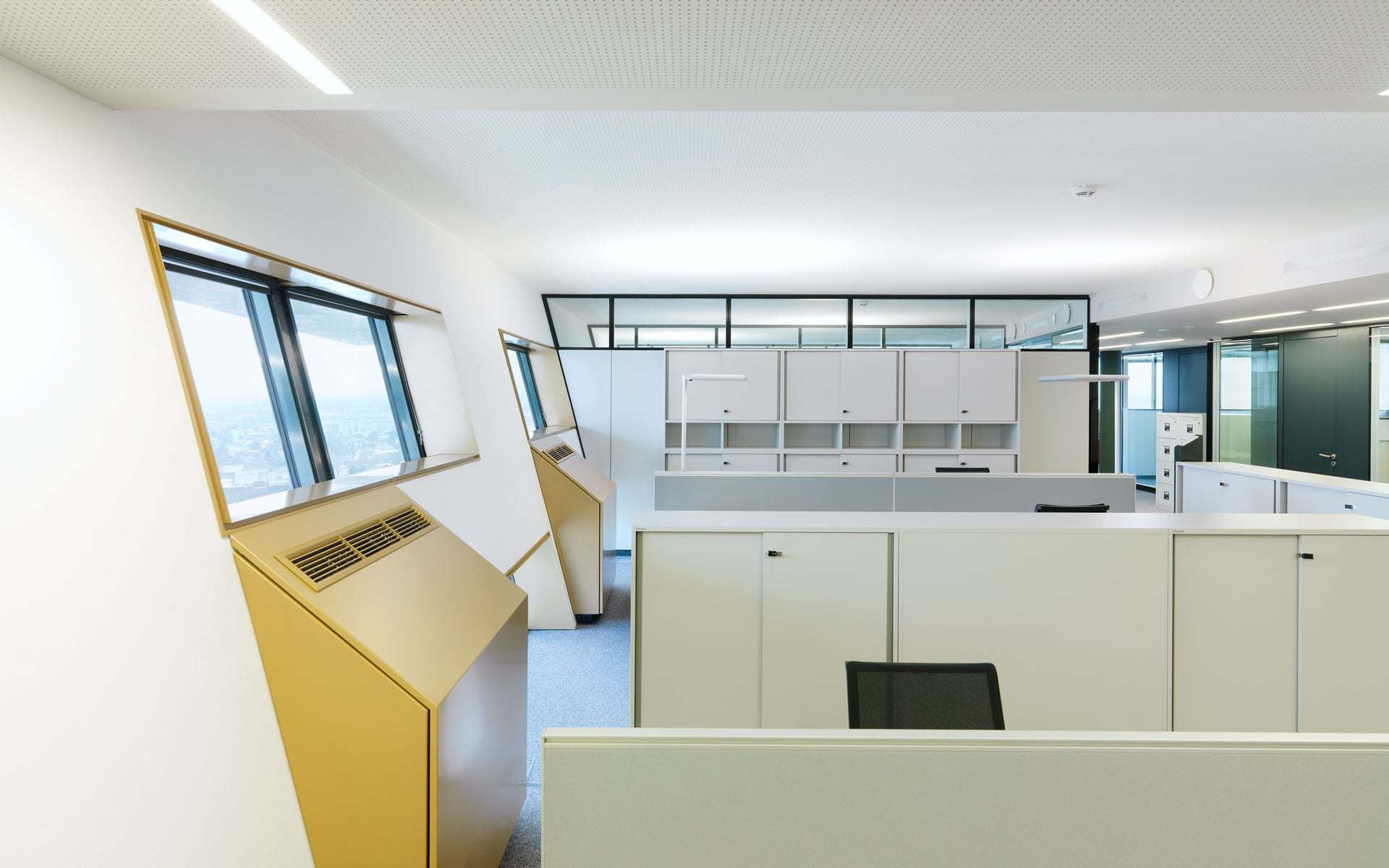
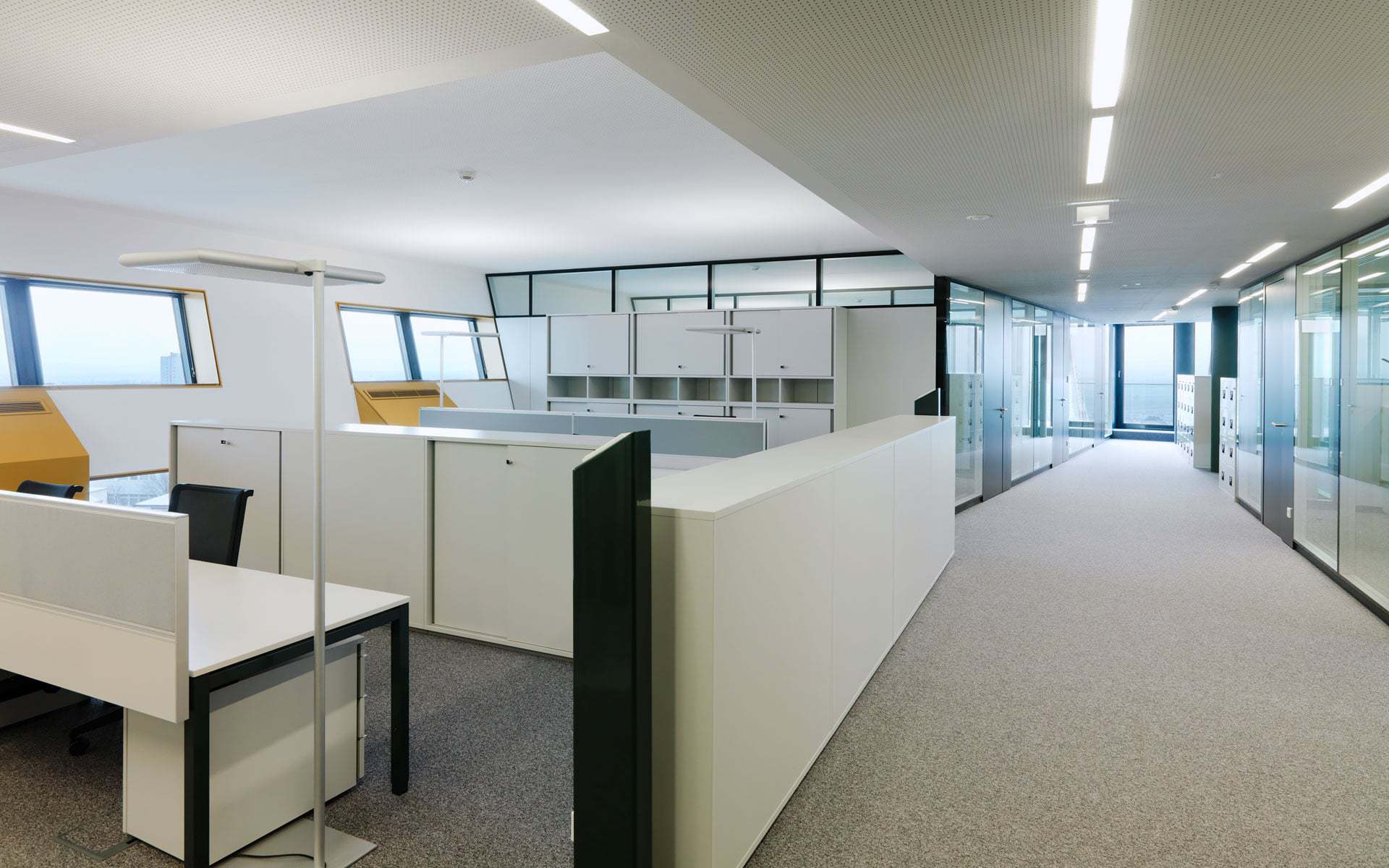
Thirdly, as a depiction of the company’s internal organisation
The structural layout of the building and the articulation of the facade on a basic grid of 1.30 m allows the office partition walls to be positioned flexibly within the given grid system. This allows rooms of different sizes to be made that respond to various functions and needs and, where necessary, can be easily altered. Open, semi-open or closed areas can be easily made in different formulations. The plans of the different floors illustrate this system’s high degree of flexibility. Monotony and repetition are avoided; different functions and levels of organization can be depicted.
Fourthly, as an articulated body of rules of communication
The partitions between the individual offices are made of glass or have a high-level strip of glazing that varies in height. The different amounts of glazing articulate the different amount or degree of communication required.
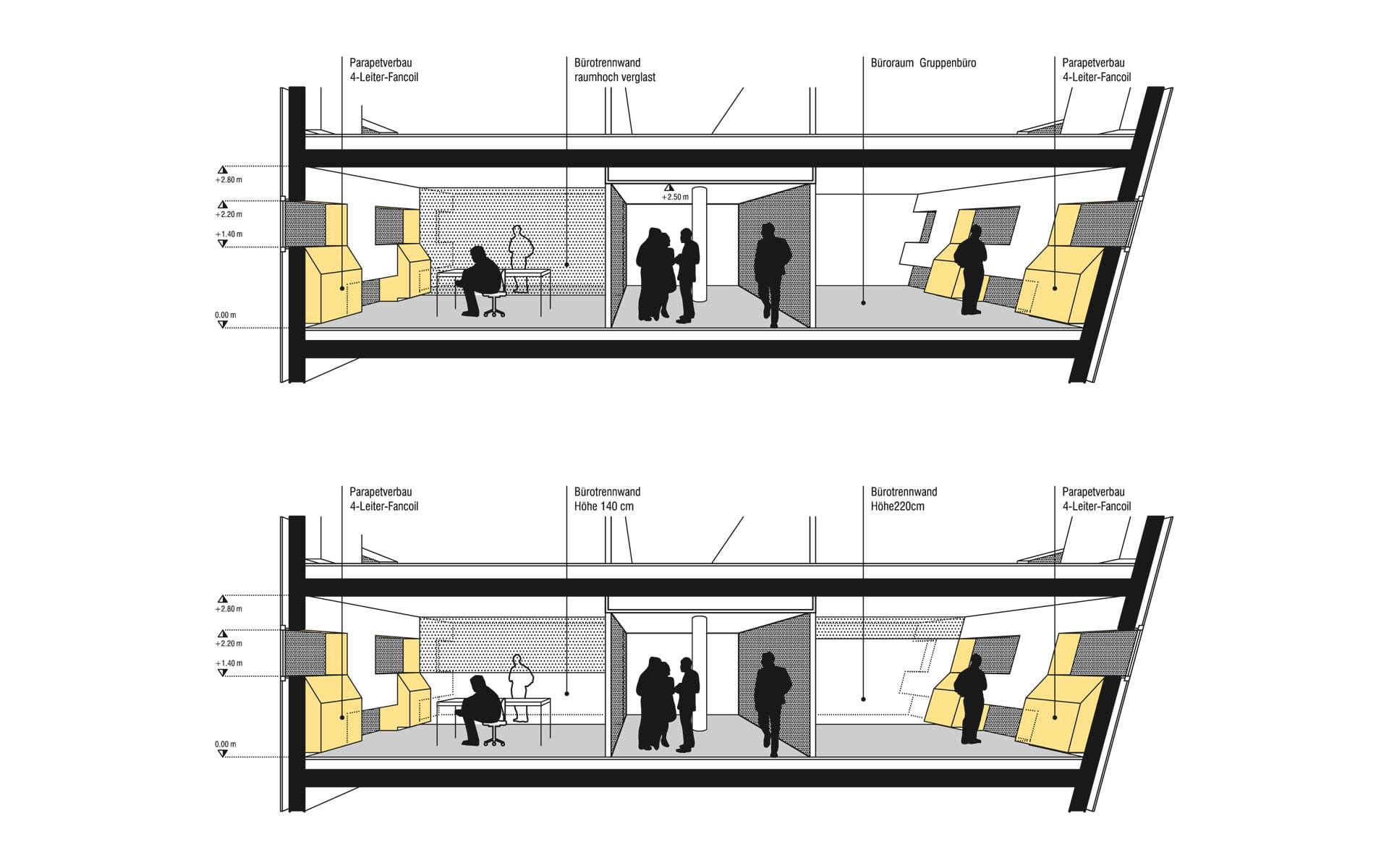
Particular attention is devoted to the design of the foyer and entrance hall. As a connecting element between the existing fabric and the new building this space is the building’s calling card, so to speak. Its quality is derived from its permeability, its height, the connecting bridges that traverse it, and from its glass facades that are several storeys high: the glass facade to the outside and the glass facade positioned in front of the restructured part of the existing fabric for which an artistically designed lighting concept is employed.
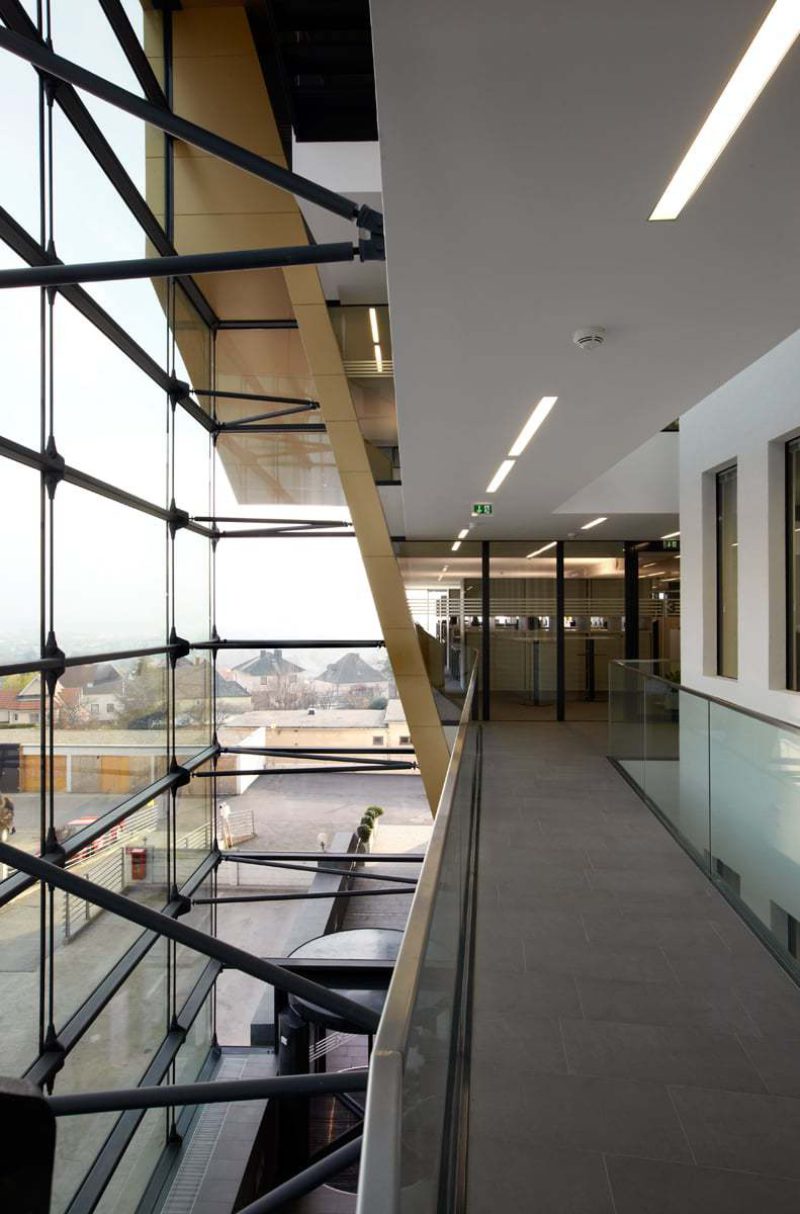
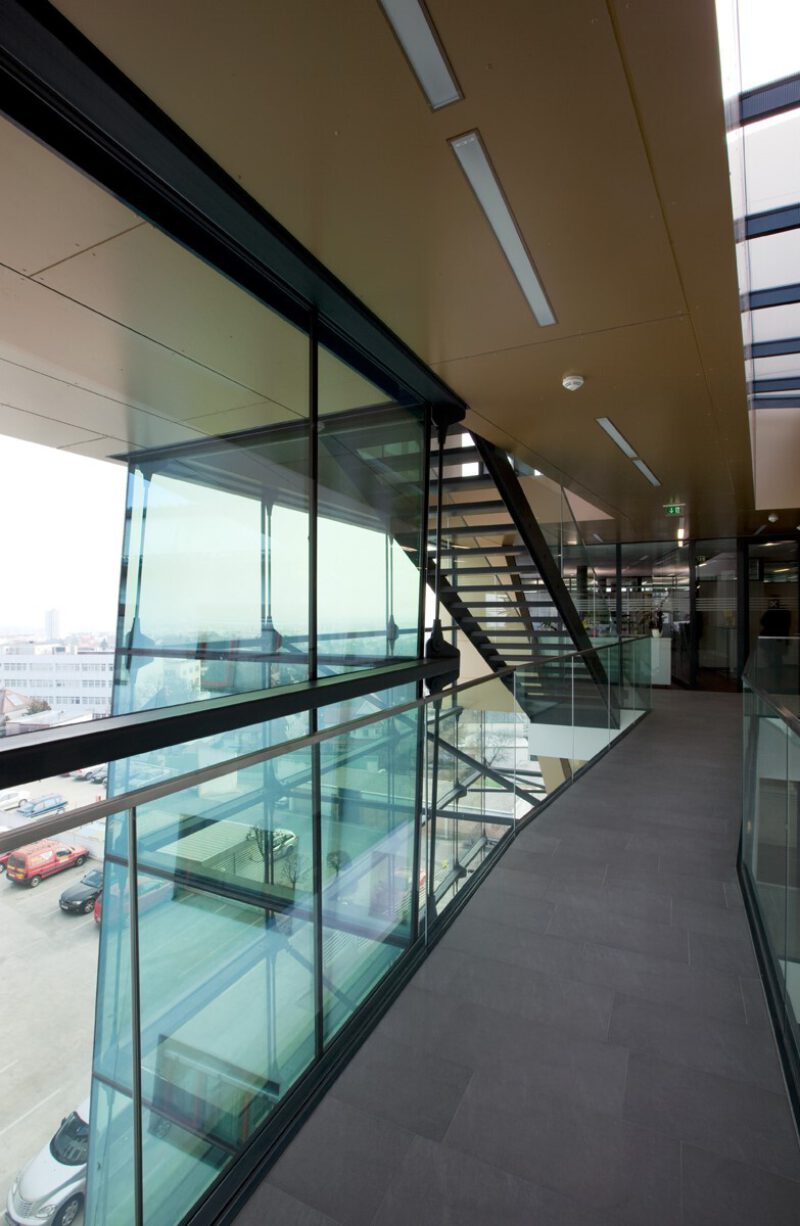
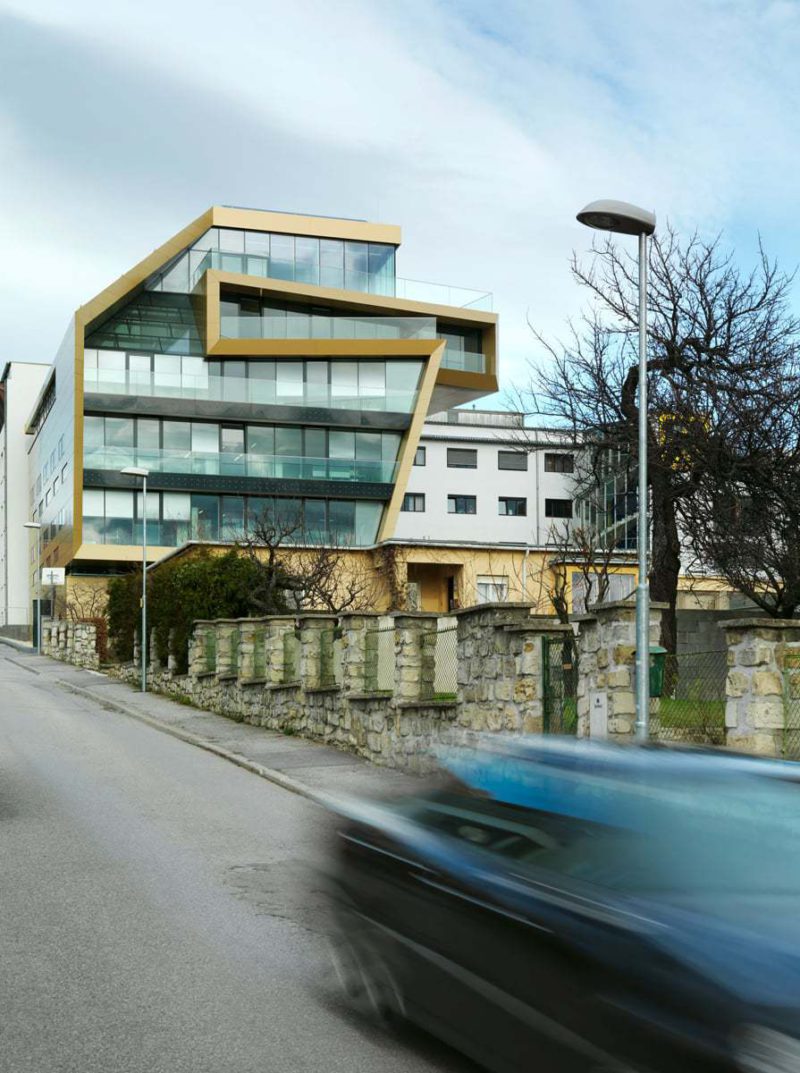
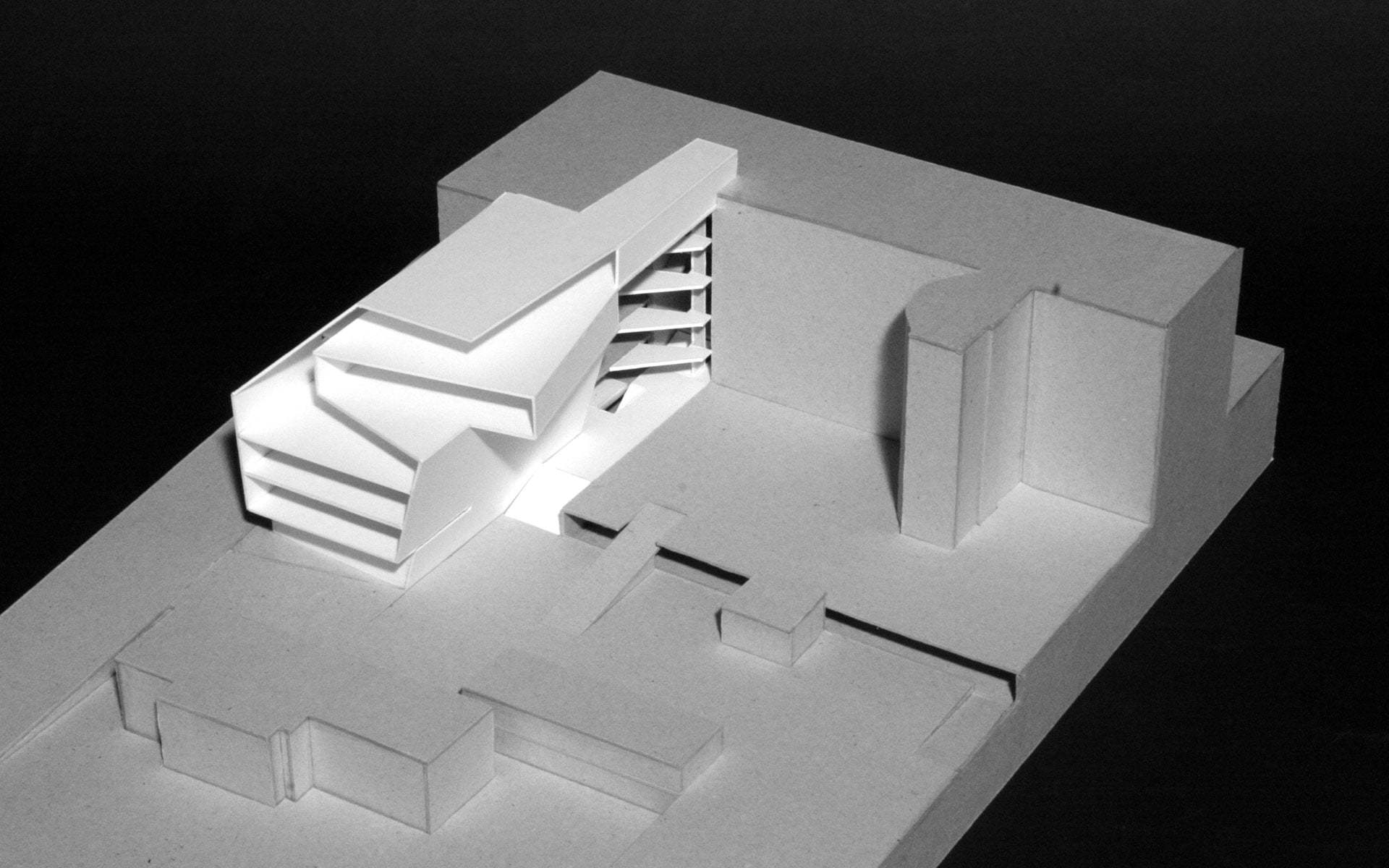
Architecture
Pichler & Traupmann Architects
Project team
Sandy Panek
Barbara Aull
Peter Bayer
Gabriele Bruckmayer
Joao Camarinha da Silva
Christoph Degendorfer
Karin Drexler
Anke Freimund
Mario Gasser
Konrad Hofmann
Michael Ivancsics
Christoph Leitner
Jan Revaj
Jürgen Schneeberger
Wolfgang Windt
Competition team
Christoph Degendorfer
Wolfgang Windt
Client
Propria Raiffeisen-Immobilien-Leasing GmbH , Vienna
Project management
Raiffeisen Leasing Immobilienmanagementges.m.b.H, Vienna
Project- and planning coordination, bidding
FCP-Fritsch Chiari & Partner Ziviltechniker GmbH, Vienna
Project coordination
Markus Weiner Ziviltechniker Ges.m.b.H, Gattendorf
Structural design
FCP-Fritsch Chiari & Partner Ziviltechniker GmbH, Vienna
Structural design execution planning
Woschitz Engineering Ziviltechniker GmbH, Eisenstadt
Building physics
Walter Prause, Vienna
MEP engineering
ZFG-Projekt Planungs- und Beratungsgesellschaft m.b.H., Baden
Electrical engineering:
Kubik Project Ges.m.b.H., Gießhübl
Facade technology
FOB.PS face/of/buildings - planningstimakovits, Oberpullendorf
Soil reports
Wolfgang Hazivar ZT Bauwesen, Eisenstadt
Site supervision
Josef Lörincz, Großhöflein und AXIS Ingenieurleistungen ZT GmbH, Vienna
Hard facts
Start of planning: 2006
Start of construction: 2008
Completion: 2010
Usable floor area: 2561 m²
Location: Eisenstadt, AT
Function: Office building
Scope: Designer with responsibility for all design services
Photographs
Paul Ott, Graz
Lisa Rastl, Vienna
Award
Invited competition 1st prize